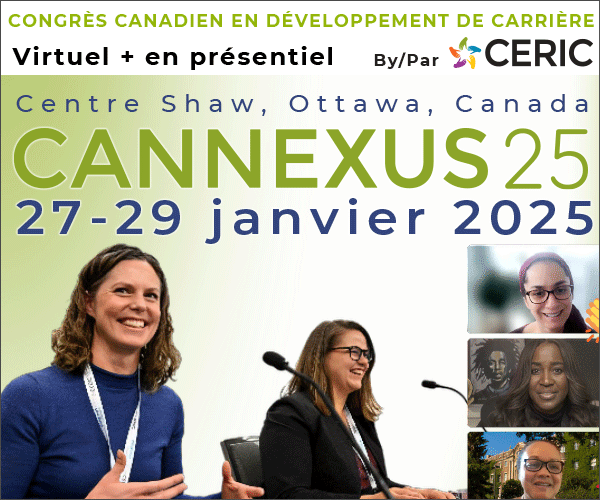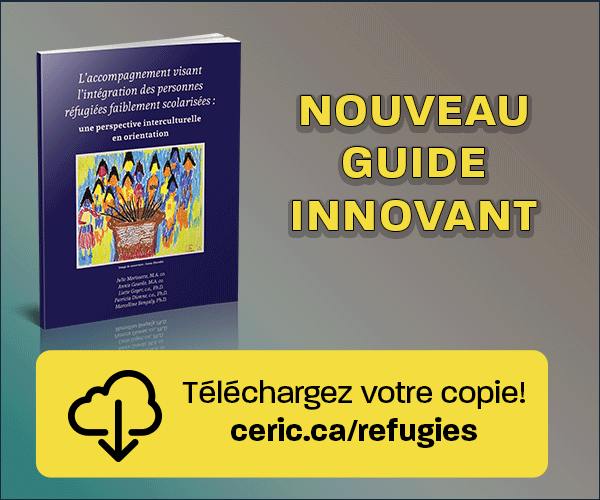Langue et identité du point de vue d'un enseignant non-natif immigrant qui a l’anglais comme langue seconde
Mots-clés :
Anglais langue seconde, immigrés, non anglophone de langue maternelle, professeurRésumé
In the past two decades, the number of highly skilled immigrants has increased dramatically (Statistics Canada, Census of Population, 2006), contributing to Canada’s success in attracting smart, well-educated professionals – English as a Second Language (ESL) teachers included. As such, many diverse languages and minorities co-exist within Canada, a welcoming home to thousands of immigrants and refugees from across the globe. Canada’s Prime Minister Justin Trudeau’s greeting speech to the first group of Syrian refugees, “We get to show the world how to open our hearts and welcome in people who are fleeing extraordinarily difficult situations … You are home. Welcome home” (Trudeau, 2015) is a case in point.
Références
Amin, N. (2001). Nativism, the native speaker construct, and minority immigrant women teachers of English as a Second Language. The CATESOL Journal, 13(1), 89-107. Retrieved from www.catesoljournal.org/volume-13-1/.
Baxter, J. (1980) How should I speak English? American-ly, Japanesely, or internationally? JALT Journal, 2, 31-61. doi:10.1111/j.1467-971X.1995.tb00353.x
Brass, L. (2016). Same person: Different languages, different identities? (Unpublished paper). Vancouver, British Columbia: University of Calgary.
Brown, K. (1995). World Englishes: To teach or not to teach? World Englishes, (14)2, 233-245. doi:10.1111/j.1467-971x.1995.tb00353.x.
Campion- Smith, B. (2017, February 8). Immigration fuels Canada’s population growth of 1.7 million in five years: latest census. The Star. Retrieved from https://www.thestar.com/news/canada/2017/02/08/canadas-population-grew-17m-in-5-years.html.
Canagarajah, A. S. (2006). The place of world Englishes in composition: Pluralization continued. College Composition and Communication, 57(4), 586-619.
Cervatiuc, A. (2009). Identity, good language learning, and adult immigrants in Canada. Journal of Language, Identity, and Education 8(4), 254-271. doi:10.1080/15348450903130439.
Chen, K. (2012). Could your language affect your ability to save money? [Video file]. Retrieved from http://www.ted.com/talks/keith_chen_could_your_language_affect_your_ability_to_save_money.
CIC News: Citizenship and Immigration Canada News (2017). (2016, September). Canada Immigration Newsletter. Retrieved from http://www.cicnews.com/2016/09/canadawelcomed-record-320932-new-immigrants-immigrationnumbers-set-increase-098533.html.
Cook, V. (1999). Going beyond the native speaker in language teaching. TESOL Quarterly, 33(2), 185-209.doi:10.2307/3587717.
Corbin, J. & Strauss, A. (1990). Basics of qualitative research: Grounded theory procedures and techniques. Newbury Park, CA: Sage.
Creswell, J. W. (2014). Research design: Qualitative, quantitative, and mixed methods approaches (4th ed.). Thomas Oaks, CA: Sage.
Deutscher, G. (2010, August). Does your language shape how you think? The New York Times Magazine. Retrieved from http://www.nytimes.com/2010/08/29/magazine/29language-t.html?
Fridland, V. (2015). Language and society: What your speech says about you. Virginia, USA: The Teaching Company.
Glasser, B. G. (2004). Remodeling grounded theory. Forum: Qualitative Social Research, 5(2), 1-22.
Government of Canada: Who can apply: Federal skilled workers (2017, July 14). Government of Canada. Retrieved from http://www.cic.gc.ca/english/immigrate/skilled/apply-who.asp?_ga=2.119077322.273954601.1502841759-1696982595.1500423967.
Greene, R. L. (2011). You are what you speak: Grammar grouches, language laws, and the politics of identity. New York: Delacorte Press.
Gross, J. (2013, February). How language can affect the way we think. Retrieved from http://ideas.ted.com/5-examples-ofhow-the-languages-we-speakcan-affect-the-way-we- think/
Ilieva, R. (2012). Culture as site of exploring cultural tool nominalization in immigrant ESL adults’ engagement with Canadian culture. TESL Canada Journal, 30(1), p. 87- 103.
James, C. E. & Shadd, A. (2001). Talking about identity: Encounters in race, ethnicity, and language. Toronto, Canada: Between the Lines.
Janusch, S. (2015). Voices unheard: Stories of immigrant teachers in Alberta. Int. Migration & Integration, 16, 299-315. doi: 10.1007/s12134-014-0338-4.
Josselson, R. (1983). Finding herself: Pathways to identity development in women. San Francisco, California: JosseyBass, Inc.
Kachru, B. (1985). The bilinguals' creativity. Annual Review of Applied Linguistics, (6)20, 20-33. doi:10.1017/S0267190500003032.
Kachru, B. (1990). World Englishes and applied linguistics. World Englishes, 9(1), 3-20. doi: org/10.1111/j.1467-971x.1990.tb00683.x.
Kachru, B. (1996). The paradigms of marginality. World Englishes, 15(3), 241-255. doi.org/10.1111/j.1467-971x.1996.tb00112.x
Kelly, C., E. (2013). Accidental immigrants and the search for home: Women, cultural identity, and community. Philadelphia: Temple University Press.
Khayatt, D. (2001). Revealing moments: The voice of the one who lives with labels. In James, C.E., & Shadd, A. (Eds.), Talking about identity: Encounters in race, ethnicity, and language. (pp. 68- 83). Toronto, Canada: Between the Lines.
Kramsch, C. (2009). Third culture and language education. In Wei, L., & Cook, V. (Eds.), Contemporary Applied Linguistics (pp. 233-254). doi:10.5040/9781474211789.ch-011.
Medgyes, P. (1983). The schizophrenic teacher. ELT Journal, 37(1), 2-6. doi:10.1093/elt/37.1.2.
Medgyes, P. (1992). Native or nonnative: Who's worth more? ELT Journal, 46(4), 340-349. doi:10.1093/elt/46.4.340.
Medgyes, P. (1994). The non-native teacher. London, UK: Macmillan Publishers.
Medgyes, P. (2001). When the teacher is a non-native speaker. Teaching English as a Second or Foreign Language, 3, 429- 442. Retrieved from http://teachesl.pbworks.com/w/search?q=Medgyes%2C%20P.%20(2001)-%20When%20the%20teacher%20is%20a%20non-native%20speaker.
Mills, J., Bonner, A., & Francis, K. (2006). The development of constructivist grounded theory. International Journal of Qualitative Methods, 5(1), 25- 35.
Munro, M. (2003). A primer on accent discrimination in the Canadian context. TESL Canada Journal, 20(2), 38- 51.
Norton, B. (2000). Identity and language learning: Gender, ethnicity, and educational change. Essex, England: Pearson Education Limited.
Norton, B. (2010). Identity, literacy, and English-language teaching. TESL Canada Journal, 28(1), 1. doi:10.18806/tesl.v28i1.1057.
Norton, B. (2012). Identity and second language acquisition. The Encyclopedia of Applied Linguistics, 1-8. doi:10.1002/9781405198431.wbeal0521.
Norton, B. & Toohey, K. (2011). Identity, language learning, and social change. Language Teaching, 44(4), 412- 446. doi.org/10.1017/s0261444811000309.
Ochs, E. (1993). Constructing social identity: A language socialization perspective. Research on Language and Social Interaction, 26(3), 287-306. doi:10.1207/s15327973rlsi2603_3
Ochs, E. & Schieffelin, B., B. (2011). The theory of language socialization. In A. Duranti, E. Ochs, E. & B. Schieffelin (Eds.), The handbook of language socialization, 71(1), 1-21. doi: 10.1002/9781444342901.ch1.
Parmegiani, A. (2008). Language ownership in multilingual settings: Exploring attitudes among students entering the university of KwaZulu-Natal through the Access Program. Stellenbosch Papers in Linguistics, 38, 107- 124.
Phillipson, R. (1992). ELT: The native speaker’s burden. ELT Journal, (46)1, 12- 18. doi:10.1093/elt/46.1.12.
Rampton, M. B. H. (1990). Displacing the ‘native speaker’: Expertise, affiliation, and inheritance. ELT Journal, 44(2), 97-101. doi:10.1093/ELT44.2.97.
Ricento, T. (2005). Considerations of identity in L2 learning. In E.Hinkel (Ed.), Handbook of research in second language teaching and learning (pp. 895- 911). Mahwah, NL: Lawrence Erlbaum.
Ricento, T. (2015). English, the global lingua franca? In T. Ricento (Ed.), Language policy and political economy: English in a global context (pp. 276-304). New York: Oxford University Press.
Riley, P. (2009). Language, culture, and identity: Advances in sociolinguistics. Journal of Sociolinguistics, 13(2), 275- 278. doi:10.1111/j.1467-9841.2009.00407_5.x .
Schieffelin, B. & Ochs, E. (1986). Language socialization. Annual Review of Anthropology, 15(1), 163-191. doi: org/10.1146/annurev.anthro.15.1.163.
Selasi, T. (2014, October). Don’t ask where I’m from, ask where I’m a local. [Video file]. Retrieved from http://www.ted.com/talks/taiye_selasi_don_t_ask_where_i_m_from_ask_where_i_m_a_local#t-5969.
Statistics Canada, Census of Population (2006). (2015, November 30). Level of education from age 25 to 54, by immigrant status, Canada, 2006. [Demographic table]. Retrieved from http://www.statcan.gc.ca/pub/89-503-x/2010001/article/11528/tbl/tbl002-eng.htm.
Thiessen, D., Bascia, N., & Goodson, I. (Eds.). (1996). Making a difference about difference: The lives and careers of racial minority immigrant women. Toronto, Ontario: Garamond Press.
Trudeau, J. (2015, December 11). You are home: Canada’s Justin Trudeau welcomes Syrian refugees. [Video file]. Retrieved from https://www.youtube.com/watch?v=d9_zWhkS4oQ.
Walcott, D. (2011, November). Codicil. [Video file]. Retrieved from http://www.poemhunter.com/poem/codicil/

Publié-e
Comment citer
Numéro
Rubrique
Licence

Cette œuvre est sous licence Creative Commons Attribution - Pas d'Utilisation Commerciale - Pas de Modification 4.0 International.











